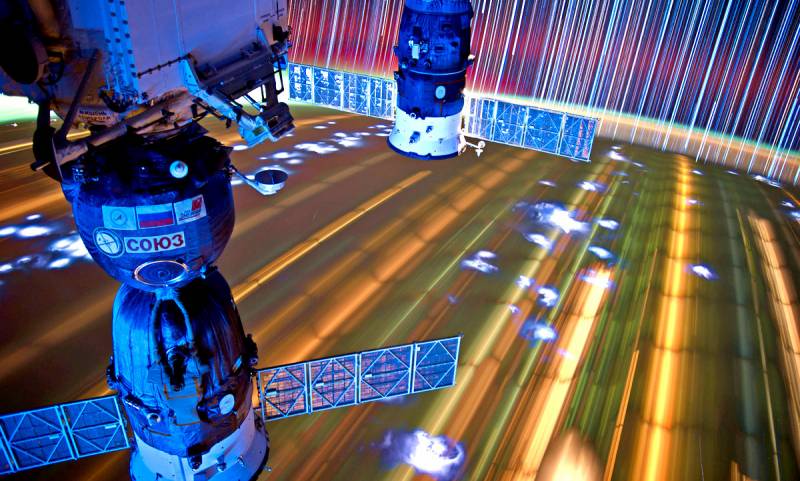ISS will be equipped with Russian combat lasers
In connection with the active development of near-Earth space space debris began to be a big problem. The international space station, located in the upper atmosphere, is forced several times a year to avoid collisions with dangerous objects, using its own engines or in tandem with spacecraft docked to it.
Scientists have proposed a curious idea of how to protect the ISS from space debris: lasers can be placed at the orbital station, with which it will shoot off cosmic particles flying at it. Initially, this idea was proposed by Japanese scientists back in 2015. In the initial project of developers from Japan, the space laser was supposed to combine the power of 10 fiber channels. However, the problem is that firing at space objects from lasers will de-energize the ISS itself.
Russian scientists have proposed a radical reduction in the number of channels to 100, which will reduce energy consumption by lasers to 5% of the available energy of the International Space Station. The range of the laser beam will be up to 10 kilometers. The duration of the shot is 10 seconds. Another 200 seconds will take to recharge. Space debris under the impact of a laser beam will either evaporate, or its orbit will be rejected in order to be dumped into the Earth’s atmosphere and burn out in it. With the help of lasers, it is supposed to be protected from objects measuring 10 cm or less.
With the help of Russian developments, the dimensions of the laser system can be reduced to 1-2 cubic meters and weight up to 500 kilograms.
Scientists have proposed a curious idea of how to protect the ISS from space debris: lasers can be placed at the orbital station, with which it will shoot off cosmic particles flying at it. Initially, this idea was proposed by Japanese scientists back in 2015. In the initial project of developers from Japan, the space laser was supposed to combine the power of 10 fiber channels. However, the problem is that firing at space objects from lasers will de-energize the ISS itself.
Russian scientists have proposed a radical reduction in the number of channels to 100, which will reduce energy consumption by lasers to 5% of the available energy of the International Space Station. The range of the laser beam will be up to 10 kilometers. The duration of the shot is 10 seconds. Another 200 seconds will take to recharge. Space debris under the impact of a laser beam will either evaporate, or its orbit will be rejected in order to be dumped into the Earth’s atmosphere and burn out in it. With the help of lasers, it is supposed to be protected from objects measuring 10 cm or less.
With the help of Russian developments, the dimensions of the laser system can be reduced to 1-2 cubic meters and weight up to 500 kilograms.

Information